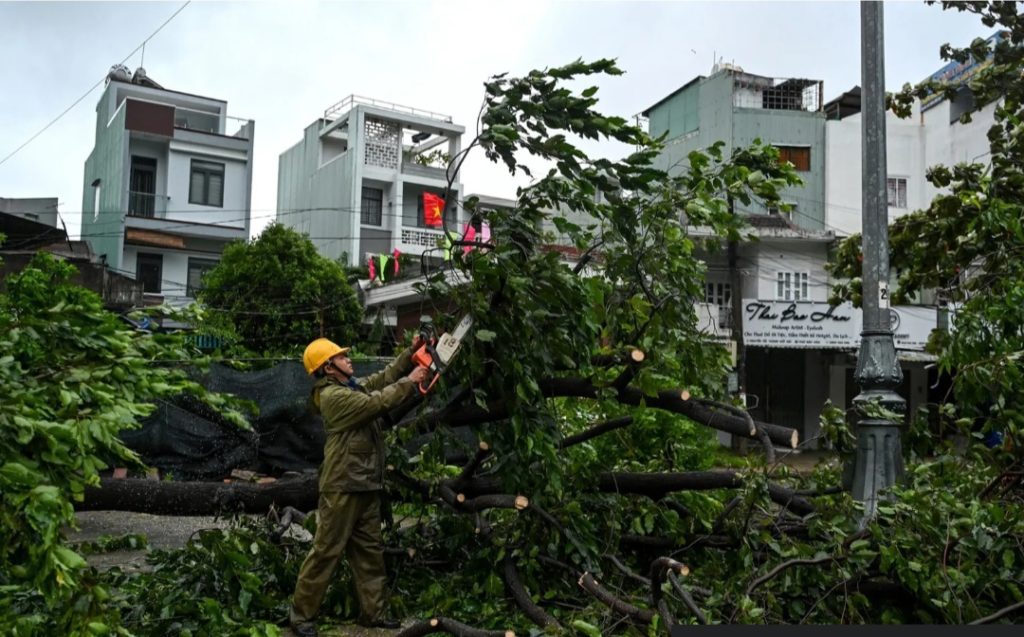
Esther Imonmion
Typhoon Kalmaegi has claimed at least 193 lives across the Philippines and Vietnam as it barrels westward towards Cambodia and Laos, leaving a trail of destruction in its wake. The deadly storm has unleashed powerful winds, torrential rains, and catastrophic flooding, prompting mass evacuations and emergency responses across Southeast Asia.
The storm tore through central Vietnam on Thursday, packing winds of up to 149km/h (92mph). By Friday morning, towns along the central coast were littered with debris after Typhoon Kalmaegi struck overnight. The fierce winds uprooted trees, ripped roofs off homes, and shattered windows. Thousands of residents sought shelter in schools and public buildings as the army mobilized to assist with rescue efforts.
Authorities in Vietnam have issued warnings of further flooding in low-lying areas, as Kalmaegi continues to dump heavy rain across regions already saturated by a week of record rainfall that killed 50 people. The government deployed more than 260,000 soldiers, along with 6,700 vehicles and six aircraft, to help deliver aid and restore order.
Several airports and expressways were closed, while hundreds of thousands of residents were evacuated ahead of landfall. In Dak Lak province, about 350km northeast of Ho Chi Minh City, many residents called for help as their homes collapsed or flooded.
Prime Minister Pham Minh Chinh convened an emergency meeting on Thursday, directing provincial leaders to reach isolated communities and ensure access to food, clean water, and essential supplies.
> “No one should be left hungry or cold,” he urged.
Before striking Vietnam, Typhoon Kalmaegi—known locally as Tino—devastated parts of the Philippines, where at least 188 people were killed and 135 remain missing. The storm triggered massive mudslides and flash floods, sweeping away homes and vehicles. Entire neighbourhoods in poorer areas were obliterated as floodwaters surged through communities.
The Philippine government has declared a state of calamity, warning that another typhoon is developing in the Pacific. In Cebu province, one of the hardest-hit areas, residents like Mely Saberon in Talisay City described the storm as unlike any they had seen before.
> “We don’t have any home anymore,” she said. “We weren’t able to salvage anything. We’ve experienced many typhoons before, but this one was different.”
As emergency teams race to reach survivors, Typhoon Kalmaegi continues its westward path toward Cambodia, where authorities have issued alerts for severe flooding and potential landslides. Regional weather agencies warn that while Kalmaegi has weakened slightly, it still poses a major threat to life and infrastructure in its path.
— Typhoon Kalmaegi’s devastation underscores the growing intensity of tropical storms battering Southeast Asia, leaving communities struggling to recover as Cambodia braces for its impact.
